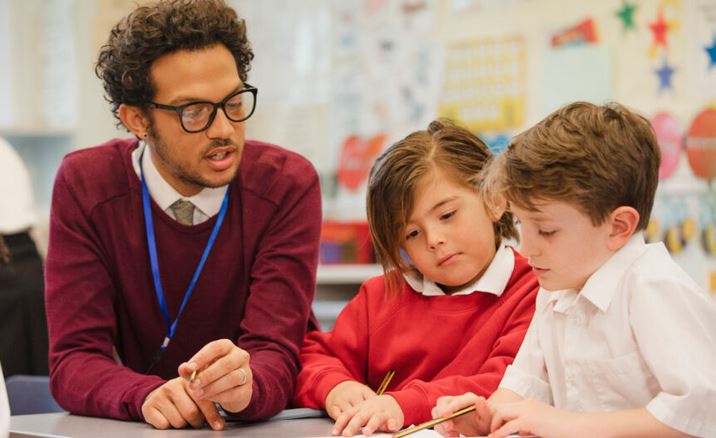Tutoring elementary school students is a rewarding endeavour that requires a unique approach to engage and support young learners. Here’s a comprehensive guide on how to effectively tutor elementary school students, ensuring a positive and impactful learning experience.

Creating a Welcoming Learning Environment
To begin, establish a warm and inviting atmosphere in your tutoring space. Make it colourful and organized, with age-appropriate materials that spark curiosity. Elementary school students thrive in environments that feel safe, encouraging them to express themselves freely.
Pro Tip: Incorporate fun and interactive elements into your tutoring space, such as educational games or colourful charts, to make learning more enjoyable.
Understanding the Developmental Stage of Elementary School Students
Recognize the unique developmental needs of elementary school students. Tailor your teaching methods to suit their cognitive and emotional capacities. Be patient, offering explanations in simple language while integrating visual aids to enhance understanding.
Pro Tip: Use storytelling or hands-on activities to capture their imagination, making learning memorable.
Personalizing Teaching Approaches for Elementary School Students
Adapt your tutoring techniques to the individual learning styles of each student. Some may respond better to visual aids, while others thrive on hands-on activities. Being flexible in your approach ensures that you can effectively reach and connect with every student.
Pro Tip: Encourage students to share their interests and incorporate them into lessons to make the learning experience more relatable and engaging.
Providing Constructive Feedback and Encouragement
Offer positive reinforcement and constructive feedback to boost confidence. Celebrate achievements, no matter how small, and gently guide them through challenges. Creating a supportive environment fosters a love for learning and resilience in the face of difficulties.
Pro Tip: Use a rewards system or simple praise to reinforce good behaviour and accomplishments, motivating students to stay engaged.
Navigating Challenges and Keeping Sessions Dynamic
Address challenges promptly and with patience. If a concept proves challenging, break it down into simpler parts, providing additional examples or practical applications. Keep sessions dynamic by incorporating a variety of activities to prevent monotony.
Pro Tip: Introduce short breaks for movement or creative exercises to maintain energy levels and focus during longer tutoring sessions.
Instilling a Lifelong Love for Learning
Ultimately, the goal of tutoring elementary school students goes beyond immediate academic improvement. Instil a love for learning by connecting lessons to real-world applications and encouraging curiosity. Foster a mindset that views challenges as opportunities for growth.
Pro Tip: Share stories about famous individuals who overcame obstacles through learning, inspiring students to see education as a lifelong journey.
Incorporating Interactive Technology Tools
Integrate age-appropriate technology tools to enhance engagement. Educational apps, interactive websites, or virtual learning platforms can provide a dynamic and modern dimension to your tutoring sessions. Explore options that align with the curriculum and offer interactive exercises.
Pro Tip: Research and test technology tools in advance to ensure they are suitable for the age group and align with educational goals.
Facilitating Peer Learning Sessions
Organize occasional peer learning sessions where students can collaborate and teach each other. Therefore, this approach not only reinforces their understanding of concepts but also promotes teamwork and communication skills.
Pro Tip: Assign roles within the peer groups, such as a “teacher” and a “helper,” to encourage a sense of responsibility and cooperation.
Incorporating Real-World Applications
Connect lessons to real-world scenarios to make the content more relatable. Discuss how the topics they’re learning apply to everyday life. Therefore, this approach helps elementary school students see the practical significance of their studies.
Pro Tip: Use examples from their local community or personal experiences to create meaningful connections.
Conclusion
In conclusion, tutoring elementary school students effectively involves creating a nurturing environment, understanding their developmental stage, and personalizing teaching approaches. Hence, providing constructive feedback, navigating challenges, and instilling a passion for learning. By incorporating these strategies, you can make a lasting impact on the educational journey of young learners, setting them on a path of curiosity, resilience, and lifelong learning.




